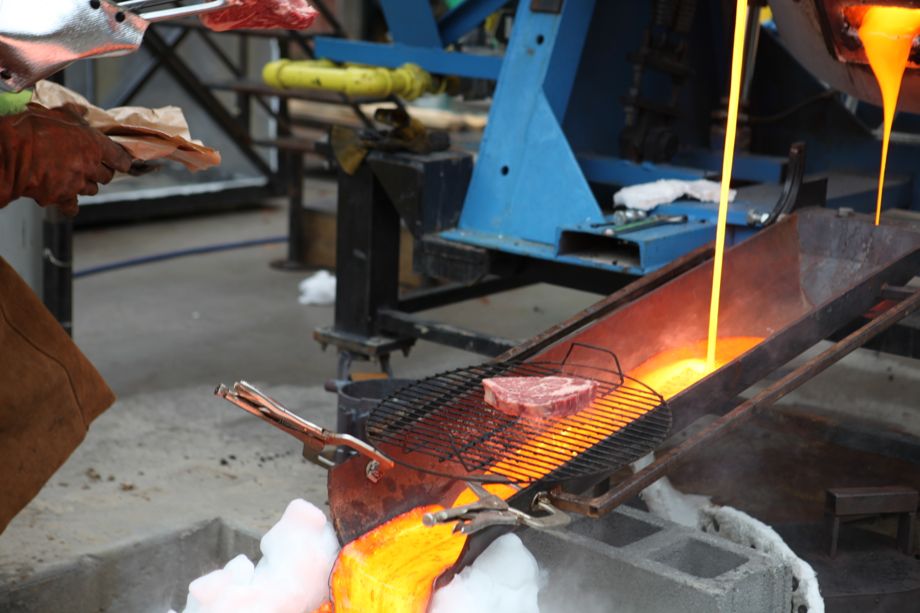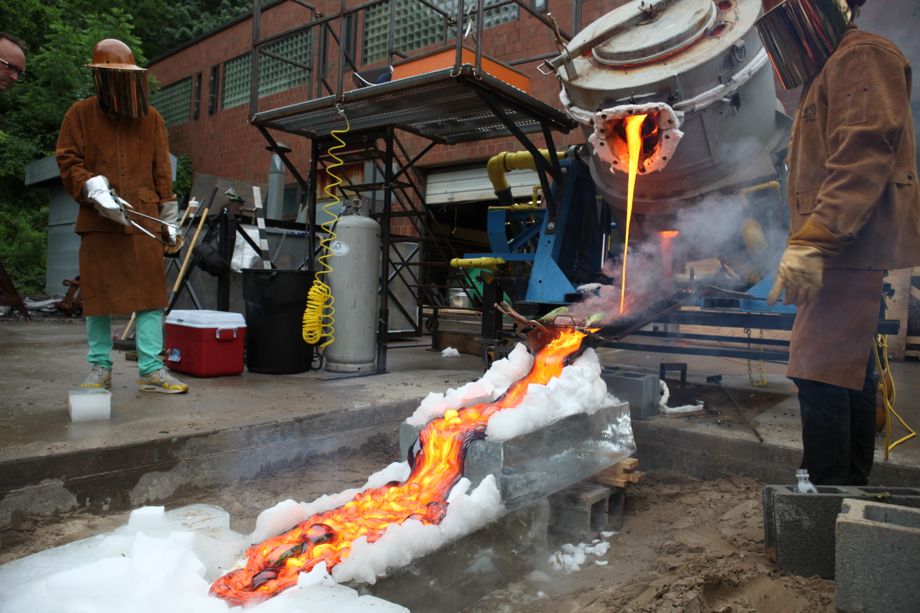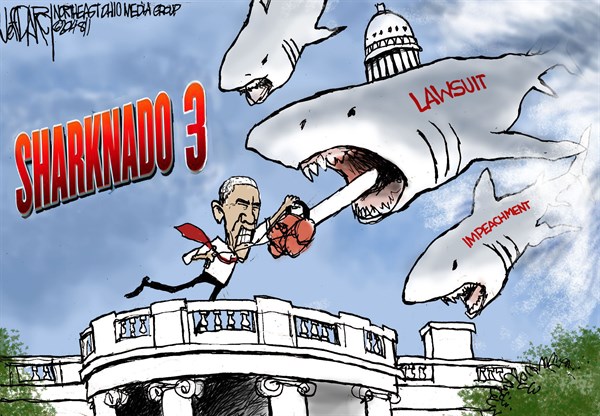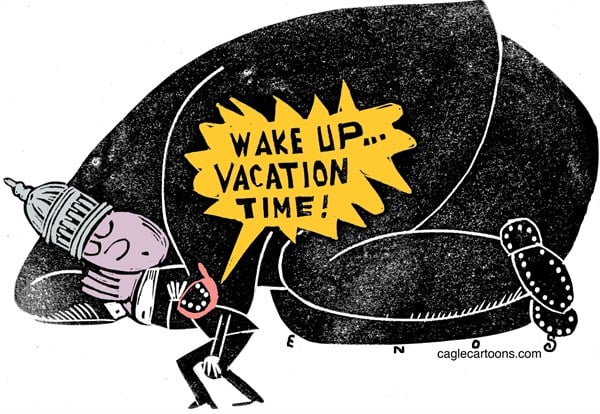n2doc
n2doc's JournalLibyan unrest "much worse" than 2011 war
Libya is descending into a civil war spiral that is "much worse" than the NATO-backed war that toppled former leader Muammar Gaddafi in 2011, residents fleeing the country said Saturday.
"We have gone through (war) before, with Gaddafi, but now it's much worse," Paraskevi Athineou, a Greek woman living in Libya, told AFP.
"Chaos reigns. There is no government, we have no food, no fuel, no water, no electricity for hours on end," she said.
Athineou was part of a group of 186 people evacuated from Tripoli by a Greek navy frigate which reached the port of Piraeus early on Saturday.
more
http://english.al-akhbar.com/content/libyan-unrest-much-worse-2011-war
Forget Charcoal Versus Gas. The Best Way to Grill a Steak Is With Molten Lava

British designer duo Bompas & Parr, who designed the world’s first edible fireworks and are best known for their ambitious and sometimes monumental jelly-based sculptures, traveled to Syracuse, New York, this summer to try out their idea for the world’s most extreme barbecue session—grilling meat over 2,100 degrees Fahrenheit lava.
Sam Bompas said he first experienced cooking with lava on a visit to Sakurajima, an active composite volcano (stratovolcano) in Japan. “After climbing across the safety barriers, I was able to use lava to cook lunch,” he said. “This gave me goosebumps. The intensity of the experience meant that on returning to the U.K., I immediately sat down with Harry Parr to plot. We wanted to see if there was a way to create synthetic lava so a wider audience could experience the wonders of food cooked this way.”
The key to making that wish come true was Professor Robert Wysocki of Syracuse University’s Lava Project. Wysocki creates artificial volcanoes and bubbling streams of man-made lava by melting 1.1-billion-year-old basaltic rock in a rigged industrial bronze furnace. Wysocki and his team have conducted some 100 lava pours so far for the sake of science or art, but never in the pursuit of grilling a 10-ounce rib-eye steak.
So how did it taste?

Bompas told me in an email that it was “the best I've ever had. It might be [something] to do with the theatre of molten rock harnessed for cookery!” He added: “The intense heat meant that the exterior was sealed in seconds. There was an excellent char, but the inside was done medium-rare in about a minute alone. We feasted like ogres!
more
http://www.slate.com/blogs/the_eye/2014/08/01/bompas_parr_join_forces_with_robert_wysocki_of_syracuse_university_to_barbecue.html
Chili peppers for a healthy gut: Spicy chemical may inhibit gut tumors
Researchers at the University of California, San Diego School of Medicine report that dietary capsaicin -- the active ingredient in chili peppers -- produces chronic activation of a receptor on cells lining the intestines of mice, triggering a reaction that ultimately reduces the risk of colorectal tumors.
The receptor or ion channel, called TRPV1, was originally discovered in sensory neurons, where it acts as a sentinel for heat, acidity and spicy chemicals in the environment. "These are all potentially harmful stimuli to cells," said Eyal Raz, MD, professor of Medicine and senior author of the study. "Thus, TRPV1 was quickly described as a molecular 'pain receptor.' This can be considered to be its conventional function, which all takes place in the nervous system."
But Raz and colleagues have found that TPRV1 is also expressed by epithelial cells of the intestines, where it is activated by epidermal growth factor receptor or EGFR. EGFR is an important driver of cell proliferation in the intestines, whose epithelial lining is replaced approximately every four to six days.
"A basic level of EGFR activity is required to maintain the normal cell turnover in the gut," said Petrus de Jong, MD, first author of the study. "However, if EGFR signaling is left unrestrained, the risk of sporadic tumor development increases."
more
http://www.sciencedaily.com/releases/2014/08/140801213339.htm
Sad news from Moab. The tower known as The Cobra has fallen

The Cobra, a famous climbing route and Fisher Tower classic, fell today near Moab, UT. It is believed that a big storm that had rolled through the area must have brought it down.

http://unofficialnetworks.com/2014/08/sad-news-from-moab-the-tower-known-as-the-cobra-has-fallen-before-and-after-photo
An Astrobiologist Asks a Sci-fi Novelist How to Survive the Anthropocene
BY DAVID GRINSPOON
Humans will have a chance to prove their adaptability as the Earth undergoes unprecedented challenges in the Anthropocene, an era named after our impact on the biosphere. To learn what it takes to survive far into the future, astrobiologist David Grinspoon interviewed Kim Stanley Robinson, a writer regarded as one of the most important science fiction and political novelists alive today. Robinson’s recent book, 2312, permits humans to survive near-extinction and populate the solar system over the course of 300 years.
We decided to kick off the conversation with a 2312 excerpt from the chapter, “Earth, The Planet of Sadness:”
“Clean tech came too late to save Earth from the catastrophes of the early Anthropocene. It was one of the ironies of their time that they could radically change the surfaces of the other planets, but not Earth. The methods they employed in space were almost all too crude and violent. Only with the utmost caution could they tinker with anything on Earth, because everything there was so tightly balanced and interwoven.”
David Grinspoon: Humans in 2312 can transverse the universe, but they could not save the Earth from environmental devastation. Do you think our intelligence just isn’t adaptive enough to learn how to live sustainably?
Kim Stanley Robinson: Human intelligence is adaptive. It’s given us enormous powers in the physical world thus far. With it, we’ve augmented our senses by way of technologies like microscopes, telescopes, and sensors, such that we have seen things many magnitudes smaller and larger than we could see with unaided senses, as well as things outside of our natural sensory ranges.
more
http://nautil.us/issue/15/turbulence/an-astrobiologist-asks-a-sci_fi-novelist-how-to-survive-the-anthropocene
NASA Is Going to Dip This Cup Into the Sunís Corona
When Justin Kasper, a professor of space physics at the University of Michigan, daydreams, he visualizes a spacecraft the size of a Toyota Prius speeding through the sun’s corona—a cloud of superheated plasma. The vessel, NASA’s Solar Probe Plus, will be closer to our star than any manmade object has ever been—only 4 million miles from its surface. There, the sun shines 512 times brighter and is 20 times wider than what we see on earth. Flying at 450,000 miles per hour, the Solar Probe will be the fastest thing we have ever put into space, and the toughest one too—its 4.5-inch-thick carbon foam heat shield, sandwiched between carbon plates, can withstand temperatures of 2,500 degrees Fahrenheit. Operating at around room temperature beneath this shield are computers and other equipment controlling the craft’s path. But the probe’s most important instrument, its Faraday cup, sits outside the shield like a figurehead on a schooner, dipping into the solar wind—a million-mile-an-hour blast of electrons, protons, and helium ions. The size of a tuna can, this cup will record the wind’s composition and direction. The results of its measurements could answer certain outstanding puzzles of astrophysics, key among which is the mystery of why the sun’s corona is hotter than its surface. And understanding the solar wind better may help humans colonize space.
The solar wind is both protective and dangerous. On one hand, it helps create the safe harbor that is our solar system—it protects us from the destructive cosmic rays emanating from the distant supernovas, much like a headland protects a bay from big ocean waves. On the other hand, it can slam massive clouds of charged particles against the earth’s magnetic field, “causing the global bubble of magnetism that surrounds our planet to shake and quiver,” says one NASA site. These storms generate tremendous electrical currents, which can greatly disrupt life on earth. During the famous 1859 solar storm, known as the Carrington Event, telegraph systems across Europe and North America failed, sparks gave operators electric shocks, and telegraph paper caught fire. In today’s world, highly dependent on satellite-to-ground communications, GPS signals, and cell phone connections, a similar electromagnetic storm can wreak havoc of a much greater degree. It is dangerous for space travel, too, interfering with equipment and irradiating astronauts and ships. While NASA has landed humans on the moon and rovers on Mars, sampled the Venusian atmosphere, and crashed a probe into Comet Tempel 1, the sun and its wind remain something of a mystery. With the Solar Probe Plus, the least explored object in our solar system will at last get a close-up.
more
http://nautil.us/issue/15/turbulence/nasa-is-going-to-dip-this-cup-into-the-suns-corona
When Good Waves Go Rogue
Early in the morning on Sept. 11, 1995, the cruise liner the Queen Elizabeth 2, on its way from Southampton to New York, was being lashed by the tail end of Hurricane Luis, somewhere off the coast of Newfoundland. As if sensing its imminent demise, Luis had galvanized one last time, twitching to life and whipping the North Atlantic into a torrent of 130 mph winds and 40-foot waves. None of this caused undue concern for the ship’s captain, Ronald Warwick, a 30-year sailing veteran well acquainted with rough seas. Luis was hardly unexpected; since leaving England, the ship had steadily tracked the storm’s path. “This was fair game for us,” the retired Commodore recalls, from his home in Somerset, England. “We are a transatlantic liner.”
At dinner, Warwick had advised the ship’s passengers that things might get a bit rough during the night, and to secure any loose possessions in their cabin. He then did what any captain would do in heavy seas. With the ship steered into the waves, Warwick slowed it to a few knots. “Heaving to” it is called, the idea being to ride out the waves as gently as possible, while maintaining just enough speed to maintain steering control. Far below the ship’s bridge, where winds roared and whipped against the armored windows, a handful of passengers held casual vigil in a bar.
Just after 2 a.m., Warwick and his officers suddenly saw a surging monster of water and convulsive white froth in the near distance. “If you’re standing on the bridge of the QE2,” he says, “your height of eye above sea level is 90 feet.” From what they could discern through the rain-soaked darkness, the crest of the looming wave was as high as the bridge itself. Warwick, who says he had never encountered anything so large in the ocean before, said it was as if they were heading into the “white cliffs of Dover.”
A minute or so later, the wave crashed across the forward deck of the QE2. “We didn’t go over the top of it,” says Warwick. “We virtually went through it.” A series of judders shot through the ship. The wall of water crashed down on the ship’s deck, buckling its steel plates some 18 inches. Still, this was all within the operating bounds of the ship. “We weren’t knocked off our feet or anything,” he says. “Most passengers were in bed.”
more
http://nautil.us/issue/15/turbulence/when-good-waves-go-rogue
ALEC meeting in Dallas provides a preview for the next state sessions
If you want to get a read on the next legislative season in Missouri and Kansas, you could get a few hints from the lawmakers’ friend. This would be the friend named ALEC, the pro-business, anti-consumer organization that fashions cookie-cutter “model legislation” for every conservative state legislator in the land.
ALEC and its adherents — including GOP leaders in both state capitols — have been responsible for some of the most contentious legislative battles of recent years. Many of them involve preserving and enhancing major corporate and industrial interests, especially those of its fossil-fuel funders such as Koch Industries. Or, as ALEC puts it, “Championing Policies to Enhance Prosperity.”
ALEC, or the American Legislative Exchange Council, is holding its annual meeting this week in Dallas. (The group held a policy workshop for lawmakers earlier this year in Kansas City.) Based on ALEC’s meeting agenda, it’s possible to foresee certain topics and strategies likely to emerge next year in Jefferson City and Topeka.
Of course, energy production and the energy marketplace rank high. Surely Kansas lawmakers, doing the bidding of ALEC and Koch, are preparing for another attack to repeal tax credits and output goals for renewable energy, despite the fact that the program has boosted the wind-power industry — and brought good-paying jobs — in the state. The effort failed this year, by a slim margin in the Kansas House, but repeal proponents are relentless.
Read more here: http://www.kansascity.com/opinion/editorials/article840664.html
Profile Information
Gender: Do not displayMember since: Tue Feb 10, 2004, 01:08 PM
Number of posts: 47,953












